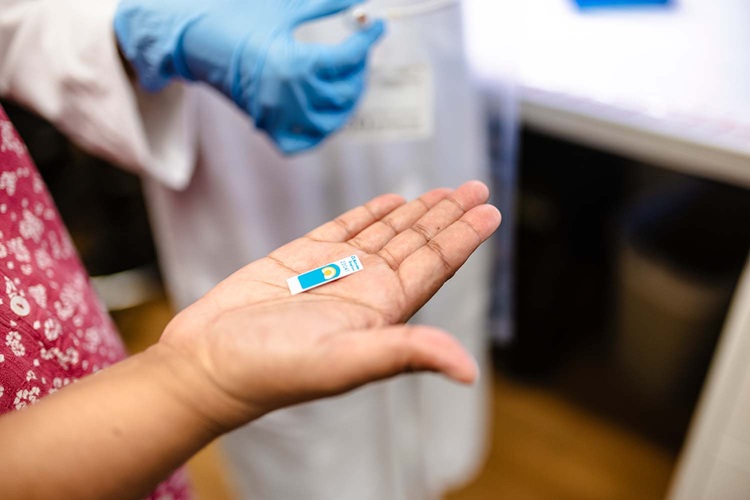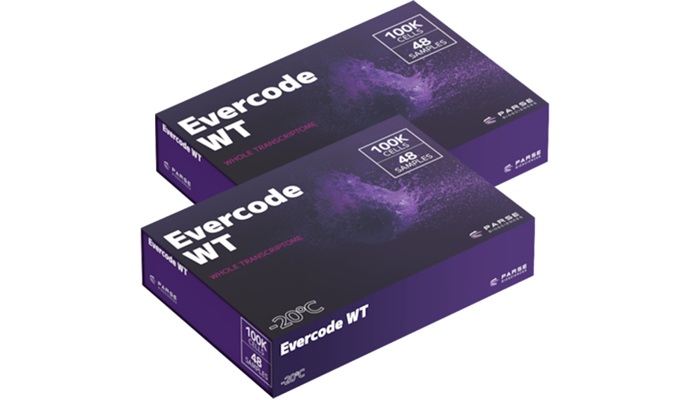Pneumocystis Frequently Found Lethal in Dermatomyositis
|
By LabMedica International staff writers Posted on 25 Sep 2021 |
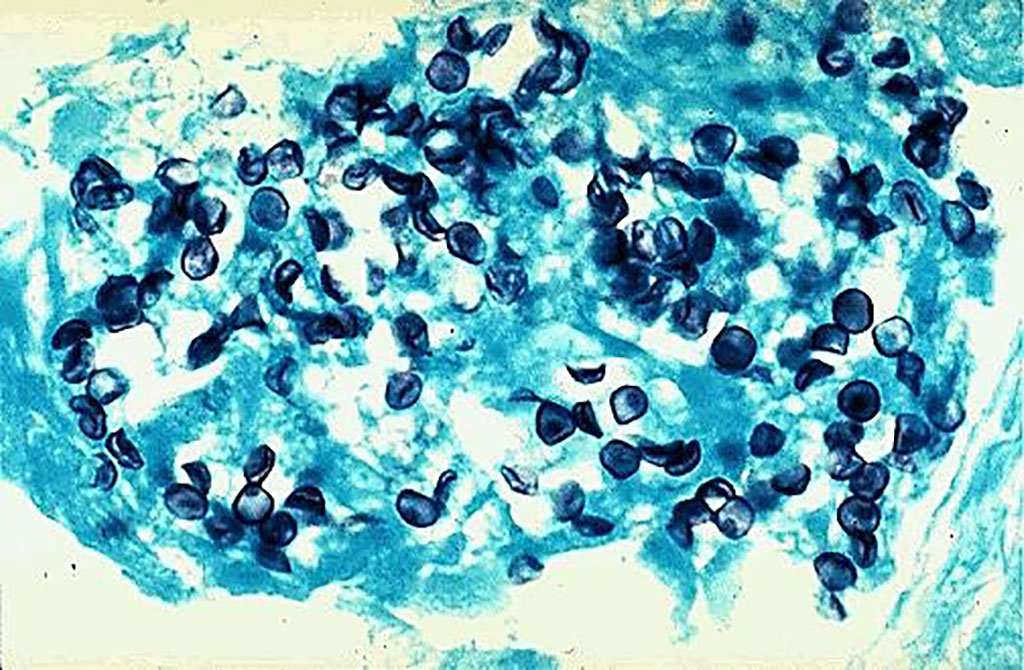
Photomicrograph of Pneumocystis jirovecii cysts in stained with Grocott-Gomori Methenamine special silver stain of lung epithelium shows numerous small, disk-shaped organisms (Photo courtesy of Michelle N Kelly, PhD, and Judd E Shellito, MD)
The term idiopathic inflammatory myopathy (IIM) denotes a group of autoimmune diseases characterized by myasthenia and typical skin rash, among which dermatomyositis (DM) and polymyositis (PM) are the most common.
Idiopathic inflammatory myopathies (IIM) are associated with a significantly higher risk of opportunistic infections including Pneumocystis jirovecii pneumonia (PJP), a potentially fatal opportunistic infection. In patients with rheumatic immune diseases, most PJP occurs in the first three months after initiating immunosuppressive therapy.
A team of Rheumatologists at the Renji Hospital (Shanghai, China) prospectively followed 463 consecutive patients with IIM a period of at least one year to analyze the incidence of PJP. In the second part of the study, they enrolled 30 consecutive PJP patients with any rheumatic disease in order to identify the mortality rate and risk factors. The diagnosis of PJP was based on comprehensive evaluation by clinical manifestations such as fever or acute dyspnea, characteristic radiographic findings, and etiological evidence. For confirmation, a case needed to have positive microbiological tests such as by next-generation sequencing and Grocott-Gomori methenamine-silver staining of bronchoalveolar lavage fluid.
The team reported that the prevalence of PJP in IIM patients was found to be 3.0/100 person-years, while in anti-melanoma differentiation-associated gene 5 antibody positive (MDA5+) DM patients it was 7.5/100 person-years and in MDA5− IIM patients 0.7/100 person-years. PJP typically occurred in the first two months in the case of MDA5+ DM patients who had a significant decrease in their CD4+ T cell counts and lymphocyte counts. In PJP patients, 3-month mortality was higher for MDA5+ DM patients than in those with other rheumatic diseases (83.3% versus 38.9%). Worryingly, MDA5+ DM patients seemed not to benefit from prompt anti-PJP treatment, unlike patients with other rheumatic diseases whose survival improved when anti-PJP treatment was started within six days.
The authors concluded that the MDA5+ DM patients are highly susceptible to infection with Pneumocystis jirovecii, which is also harder to cure than in other rheumatic diseases. The reason for the higher incidence and mortality may be related to the lower CD4+ T cell counts and progressive interstitial lung disease in MDA5+ patients. The study was published on September 4, 2021 in the journal Arthritis Research & Therapy.
Related Links:
Renji Hospital
Idiopathic inflammatory myopathies (IIM) are associated with a significantly higher risk of opportunistic infections including Pneumocystis jirovecii pneumonia (PJP), a potentially fatal opportunistic infection. In patients with rheumatic immune diseases, most PJP occurs in the first three months after initiating immunosuppressive therapy.
A team of Rheumatologists at the Renji Hospital (Shanghai, China) prospectively followed 463 consecutive patients with IIM a period of at least one year to analyze the incidence of PJP. In the second part of the study, they enrolled 30 consecutive PJP patients with any rheumatic disease in order to identify the mortality rate and risk factors. The diagnosis of PJP was based on comprehensive evaluation by clinical manifestations such as fever or acute dyspnea, characteristic radiographic findings, and etiological evidence. For confirmation, a case needed to have positive microbiological tests such as by next-generation sequencing and Grocott-Gomori methenamine-silver staining of bronchoalveolar lavage fluid.
The team reported that the prevalence of PJP in IIM patients was found to be 3.0/100 person-years, while in anti-melanoma differentiation-associated gene 5 antibody positive (MDA5+) DM patients it was 7.5/100 person-years and in MDA5− IIM patients 0.7/100 person-years. PJP typically occurred in the first two months in the case of MDA5+ DM patients who had a significant decrease in their CD4+ T cell counts and lymphocyte counts. In PJP patients, 3-month mortality was higher for MDA5+ DM patients than in those with other rheumatic diseases (83.3% versus 38.9%). Worryingly, MDA5+ DM patients seemed not to benefit from prompt anti-PJP treatment, unlike patients with other rheumatic diseases whose survival improved when anti-PJP treatment was started within six days.
The authors concluded that the MDA5+ DM patients are highly susceptible to infection with Pneumocystis jirovecii, which is also harder to cure than in other rheumatic diseases. The reason for the higher incidence and mortality may be related to the lower CD4+ T cell counts and progressive interstitial lung disease in MDA5+ patients. The study was published on September 4, 2021 in the journal Arthritis Research & Therapy.
Related Links:
Renji Hospital
Latest Immunology News
- Routine Blood Test Can Predict Who Benefits Most from CAR T-Cell Therapy
- New Test Distinguishes Vaccine-Induced False Positives from Active HIV Infection
- Gene Signature Test Predicts Response to Key Breast Cancer Treatment
- Chip Captures Cancer Cells from Blood to Help Select Right Breast Cancer Treatment
- Blood-Based Liquid Biopsy Model Analyzes Immunotherapy Effectiveness
- Signature Genes Predict T-Cell Expansion in Cancer Immunotherapy
- Molecular Microscope Diagnostic System Assesses Lung Transplant Rejection
- Blood Test Tracks Treatment Resistance in High-Grade Serous Ovarian Cancer
- Luminescent Probe Measures Immune Cell Activity in Real Time
- Blood-Based Immune Cell Signatures Could Guide Treatment Decisions for Critically Ill Patients
- Novel Tool Predicts Most Effective Multiple Sclerosis Medication for Patients
- Companion Diagnostic Test for CRC Patients Identifies Eligible Treatment Population
- Novel Tool Uses Deep Learning for Precision Cancer Therapy
- Companion Diagnostic Test Identifies HER2-Ultralow Breast Cancer and Biliary Tract Cancer Patients
- Novel Multiplex Assay Supports Diagnosis of Autoimmune Vasculitis
- Blood Test Predicts Immunotherapy Efficacy in Triple-Negative Breast Cancer
Channels
Clinical Chemistry
view channel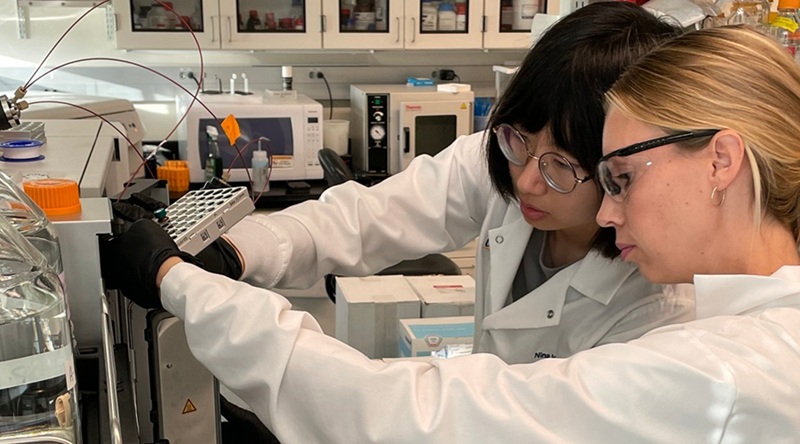
Online Tool Detects Drug Exposure Directly from Patient Samples
Doctors often rely on patient interviews and medical records to determine what medications a person has taken, but this information is frequently incomplete. People may forget drugs they used, take over-the-counter... Read more
Chemical Imaging Probe Could Track and Treat Prostate Cancer
Prostate cancer remains a leading cause of illness and death among men, with many patients eventually developing resistance to standard hormone-blocking therapies. These drugs often lose effectiveness... Read moreMolecular Diagnostics
view channel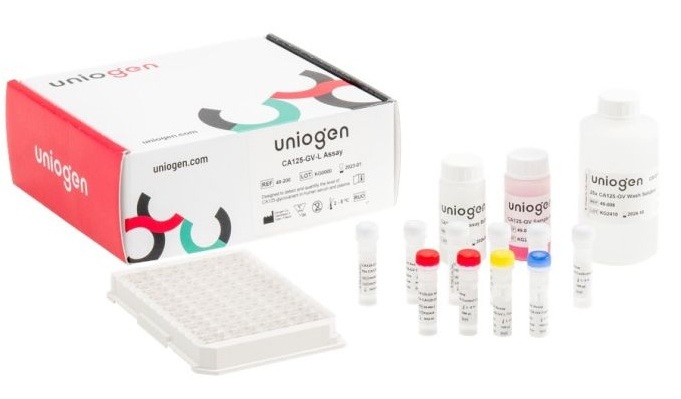
Ovarian Cancer Assay Outperforms Traditional Tests in Early Disease Detection
Globally, ovarian cancer is one of the deadliest cancers affecting women. Traditionally, early diagnosis of ovarian cancer has been challenging. Many ovarian cancers are diagnosed only after they have... Read more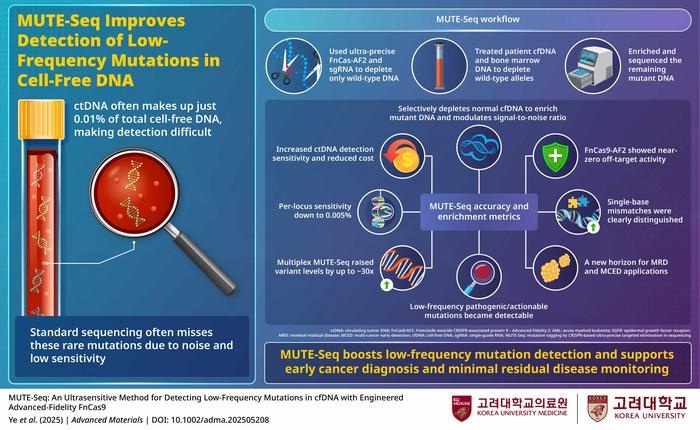
Ultrasensitive Method Detects Low-Frequency Cancer Mutations
Liquid biopsy has emerged as a promising approach for cancer detection and treatment monitoring, although its clinical impact has been limited by the extremely low levels of tumor-derived DNA circulating in blood.... Read moreHematology
view channel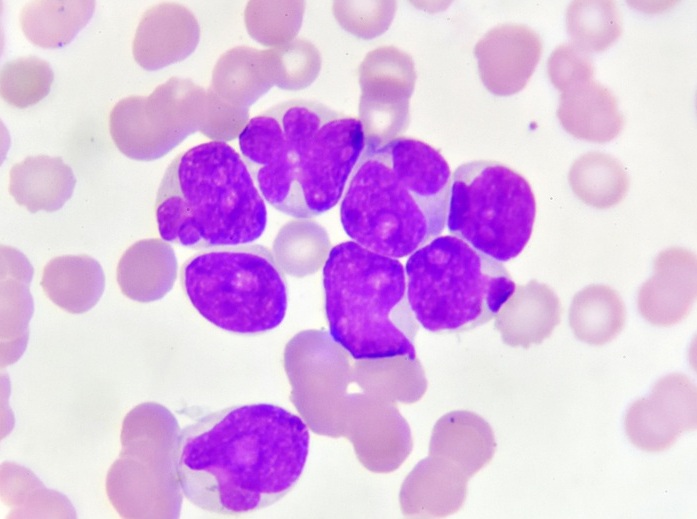
MRD Tests Could Predict Survival in Leukemia Patients
Acute myeloid leukemia is an aggressive blood cancer that disrupts normal blood cell production and often relapses even after intensive treatment. Clinicians currently lack early, reliable markers to predict... Read more
Platelet Activity Blood Test in Middle Age Could Identify Early Alzheimer’s Risk
Early detection of Alzheimer’s disease remains one of the biggest unmet needs in neurology, particularly because the biological changes underlying the disorder begin decades before memory symptoms appear.... Read more
Microvesicles Measurement Could Detect Vascular Injury in Sickle Cell Disease Patients
Assessing disease severity in sickle cell disease (SCD) remains challenging, especially when trying to predict hemolysis, vascular injury, and risk of complications such as vaso-occlusive crises.... Read more
ADLM’s New Coagulation Testing Guidance to Improve Care for Patients on Blood Thinners
Direct oral anticoagulants (DOACs) are one of the most common types of blood thinners. Patients take them to prevent a host of complications that could arise from blood clotting, including stroke, deep... Read moreMicrobiology
view channel
Blood-Based Diagnostic Method Could Identify Pediatric LRTIs
Lower-respiratory tract infections (LRTIs) are a leading cause of illness and death worldwide, and pneumonia is the leading infectious cause of death in children under five, claiming the lives of over... Read more
Rapid Diagnostic Test Matches Gold Standard for Sepsis Detection
Sepsis kills 11 million people worldwide every year and generates massive healthcare costs. In the USA and Europe alone, sepsis accounts for USD 100 billion in annual hospitalization expenses.... Read moreRapid POC Tuberculosis Test Provides Results Within 15 Minutes
Tuberculosis remains one of the world’s deadliest infectious diseases, and reducing new cases depends on identifying individuals with latent infection before it progresses. Current diagnostic tools often... Read more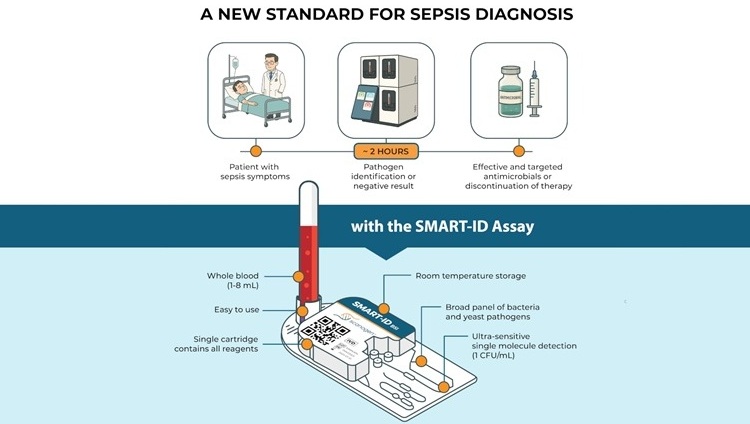
Rapid Assay Identifies Bloodstream Infection Pathogens Directly from Patient Samples
Bloodstream infections in sepsis progress quickly and demand rapid, precise diagnosis. Current blood-culture methods often take one to five days to identify the pathogen, leaving clinicians to treat blindly... Read morePathology
view channel
Rapid Low-Cost Tests Can Prevent Child Deaths from Contaminated Medicinal Syrups
Medicinal syrups contaminated with toxic chemicals have caused the deaths of hundreds of children worldwide, exposing a critical gap in how these products are tested before reaching patients.... Read more
Tumor Signals in Saliva and Blood Enable Non-Invasive Monitoring of Head and Neck Cancer
Head and neck cancers are among the most aggressive malignancies worldwide, with nearly 900,000 new cases diagnosed each year. Monitoring these cancers for recurrence or relapse typically relies on tissue... Read more
Common Health Issues Can Influence New Blood Tests for Alzheimer’s Disease
Blood-based tests for Alzheimer’s disease are transforming diagnosis by offering a simpler alternative to spinal taps and brain imaging. However, many people evaluated at memory clinics also live with... Read more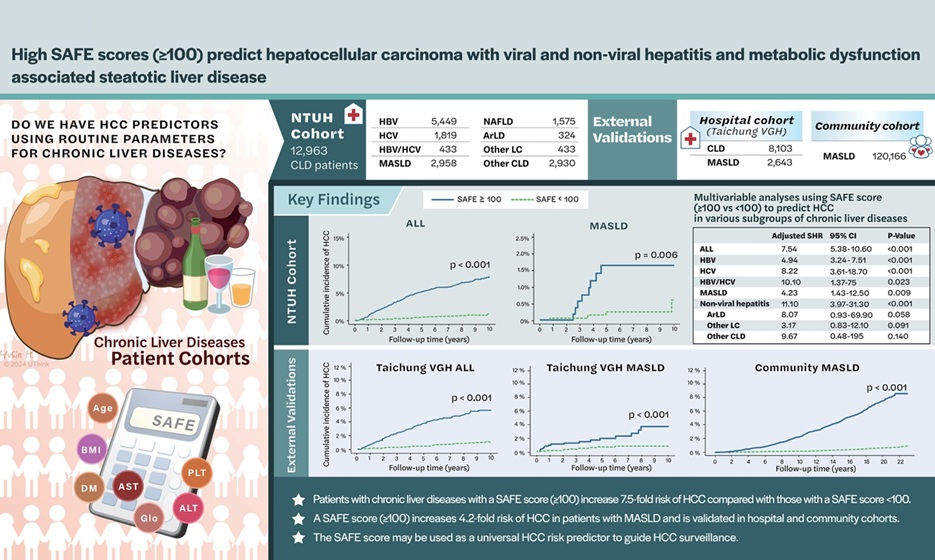
Blood Test Formula Identifies Chronic Liver Disease Patients with Higher Cancer Risk
Chronic liver disease affects millions worldwide and can progress silently to hepatocellular carcinoma (HCC), one of the deadliest cancers globally. While surveillance guidelines exist for patients with... Read moreTechnology
view channel
Machine Learning Models Diagnose ALS Earlier Through Blood Biomarkers
Amyotrophic lateral sclerosis (ALS) is a rapidly progressive neurodegenerative disease that is notoriously difficult to diagnose in its early stages. Early symptoms often overlap with other neurological... Read more
Artificial Intelligence Model Could Accelerate Rare Disease Diagnosis
Identifying which genetic variants actually cause disease remains one of the biggest challenges in genomic medicine. Each person carries tens of thousands of DNA changes, yet only a few meaningfully alter... Read moreIndustry
view channel
Abbott Acquires Cancer-Screening Company Exact Sciences
Abbott (Abbott Park, IL, USA) has entered into a definitive agreement to acquire Exact Sciences (Madison, WI, USA), enabling it to enter and lead in fast-growing cancer diagnostics segments.... Read more
















